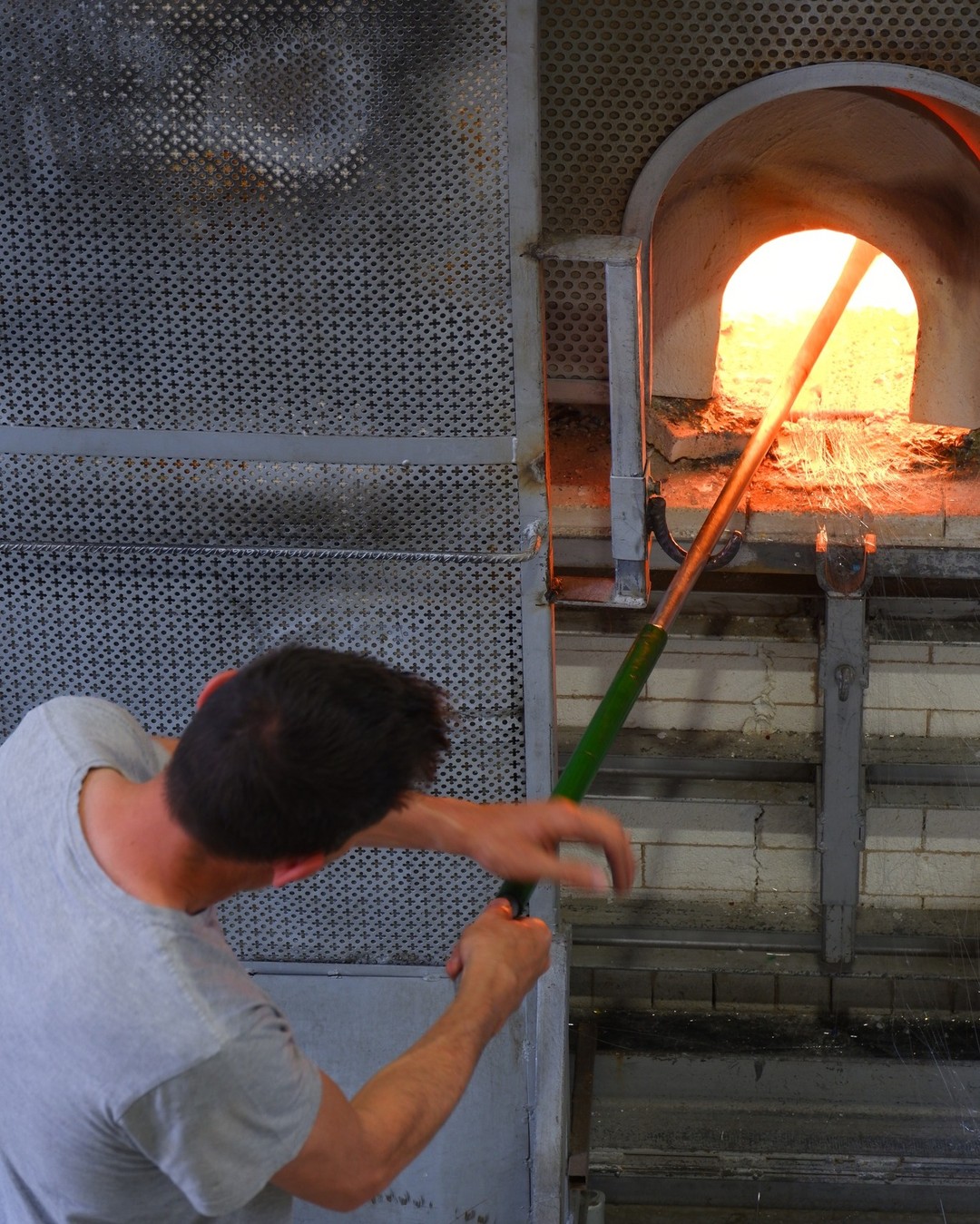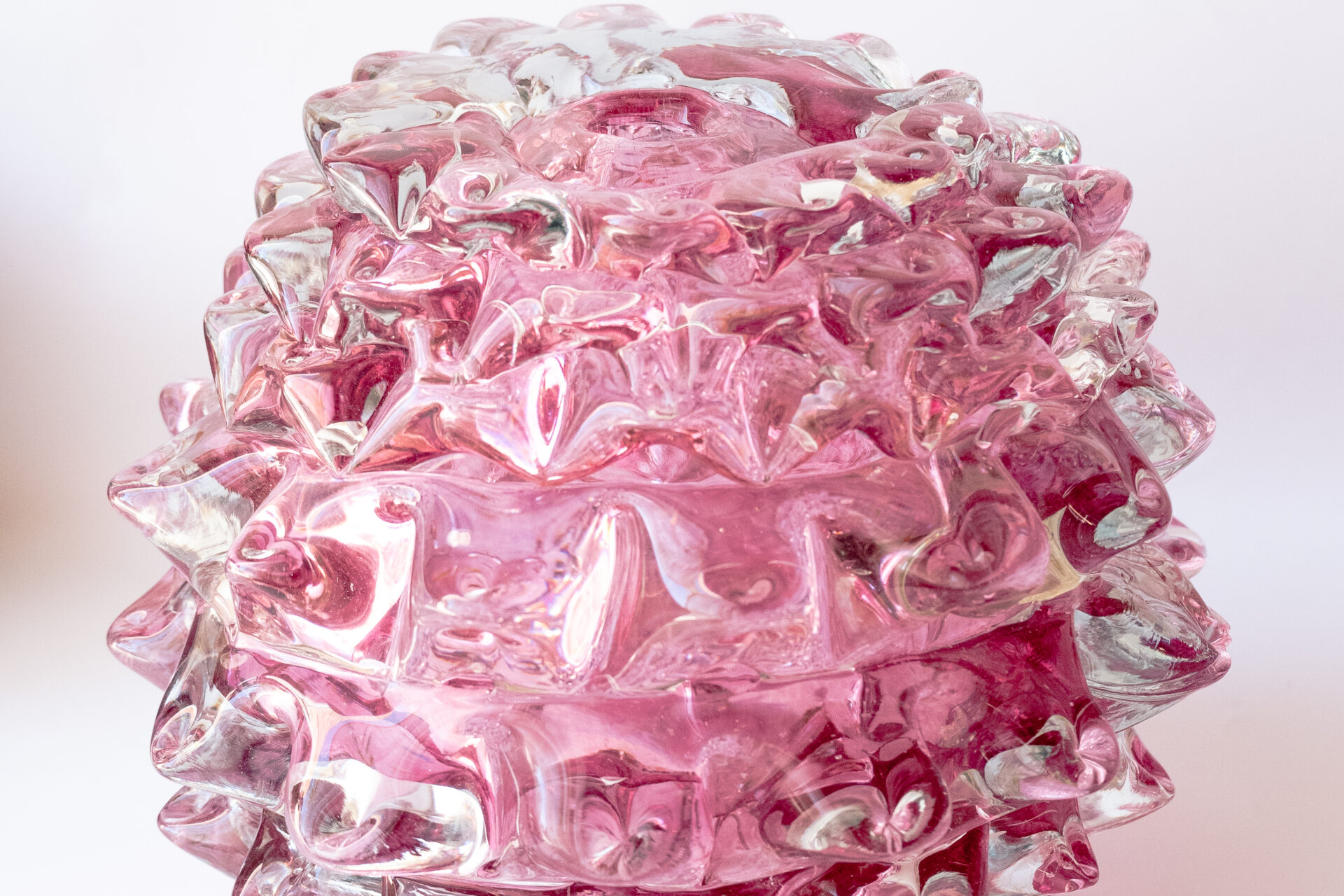The technique of Murano drinking glasses takes this name because it is the artisans themselves who blow into a straw and give the desired shape to glass that is still malleable due to high temperatures: an ancient technique still used and handed down by master glassmakers.
How is a blown glass object made?
Let’s start with the origin of glass, which is made from a simple portion of sand.
This is subjected to a thermal shock, with very high temperatures followed by cooling, so that the classic characteristics of the material are created, such as transparency even in the presence of color.
Murano artisans, before the glass solidifies and then when it is inside the furnace, use a blow pipe by attaching the mass, which is extracted while still malleable and glowing, at a temperature as high as 800 degrees.

Glass is very viscous and has no real melting temperature, so much so that it becomes a blob and facilitates the work of the experts, who can move and rotate it, giving it the shape they prefer.
Once the material is ready, shaping takes place, placing it on a metal table and blowing into the barrel to preform the object, which will have to be put back into the furnace from time to time when the processing becomes more difficult.
In fact, solidification is very rapid and it is necessary to balance the consistency as best as possible and not go below 600 degrees while processing.
To give precise shapes, such as those of small animals or to decorate vases and glasses, you can use special, special scissors, as well as other components such as colored threads, which create a colorful finish of great value.
Once this stage is finished, it is necessary for the artifact to be finished on the underside as well, going to detach the rod and placing the object on another metal plate.
The kiln step is still mandatory otherwise the material becomes too hard, and then decorating the lower part until the object is finished.
This must then eventually be engraved and only afterwards subjected to cooling, which when done reveals whether truly the work has been done to perfection or if it has imperfections.
In any case, it will be possible to refine and give greater definition to the object by going to cut and file the edges to achieve perfection.
In the case of Murano blown glass glasses, the workmanship is quite complex as the material often needs to have a very fine and precise finish and perfect smoothing of the top edges to avoid accidents.
There are many decorations, some unique and special, so as to embellish every table with a handcrafted creation far from the usual standards.
The time required to make a Murano blown glass object varies greatly and ranges from about 5 minutes to 2 hours, with the costs changing precisely depending on the amount of work that has been lavished.
While standard molds are used in the industrial world, in artisanal workshops each element is handmade and a product of the imagination, so that the customer takes home something that no one else can have identically.
Glass is not the only material that can be blown, as a similar argument can be made with plastic and metal.
However, glass always remains the one with the most suitable characteristics and the best potential, rediscovering an ancient technique that nonetheless still makes it possible to create striking design objects to decorate homes and premises.





